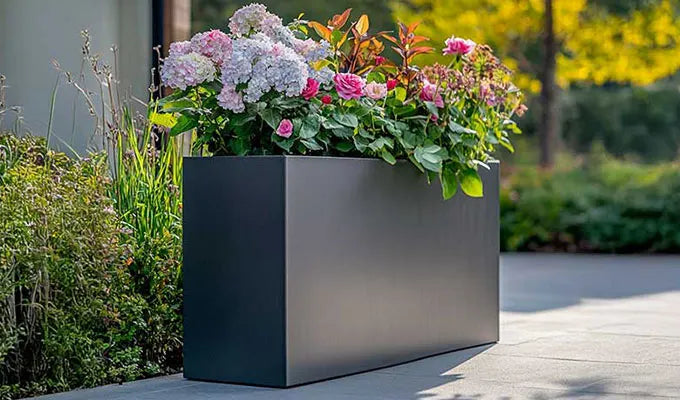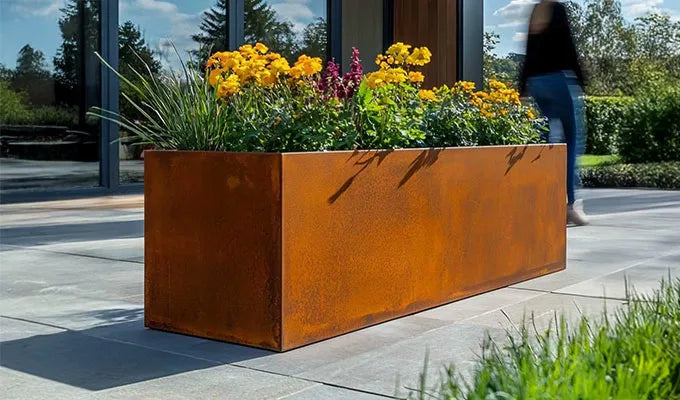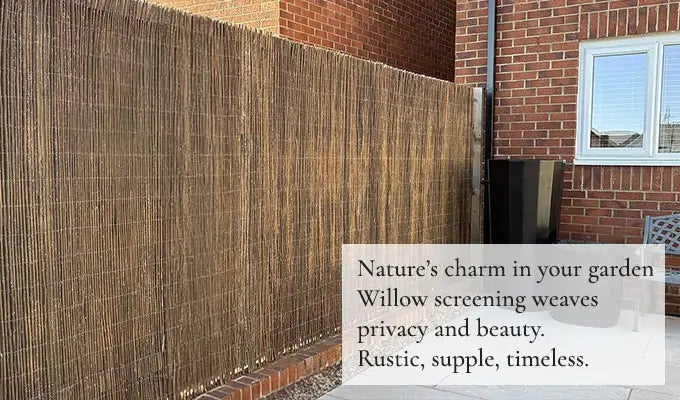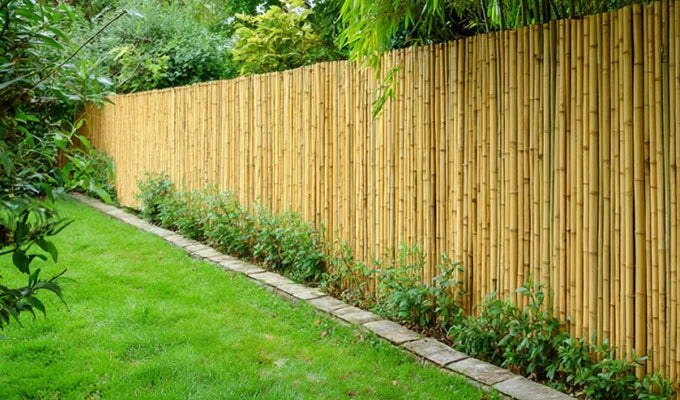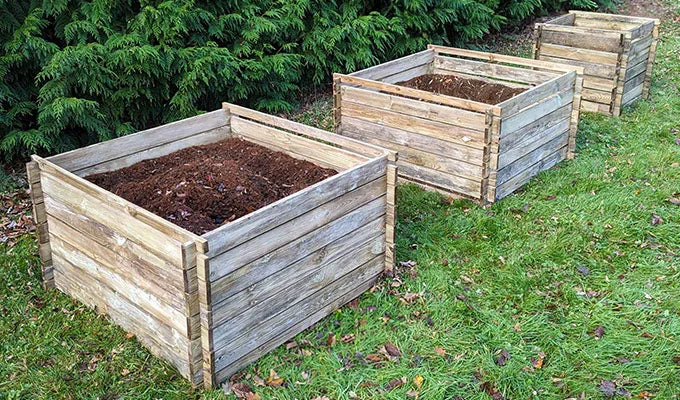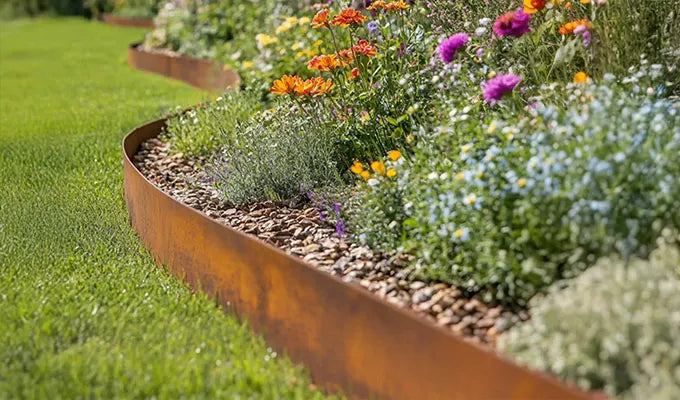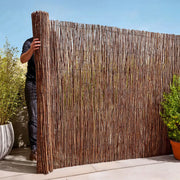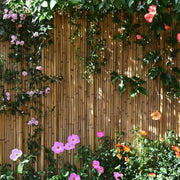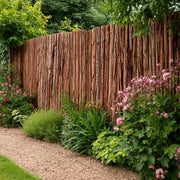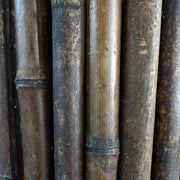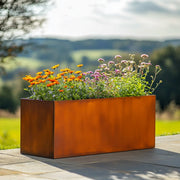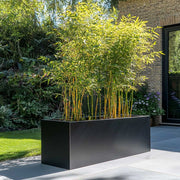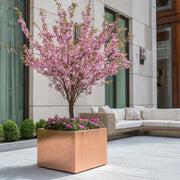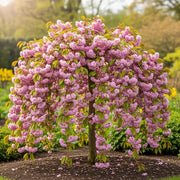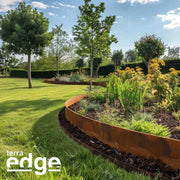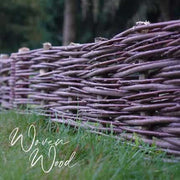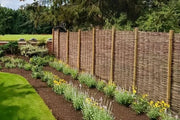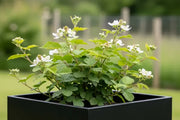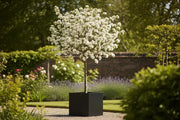Guide to Lawn Edging Materials
Lawn edging might seem like a small detail, but it defines the beauty and functionality of your garden. It creates clean boundaries between lawns, garden beds and pathways while adding style. The right edging material enhances your space by preventing mulch displacement and grass and weed encroachment.
Here’s a guide to the best lawn edging materials, their benefits, and considerations. Whether you prefer sleek modern or rustic natural aesthetics, there’s a material for your needs.
1. Metal Edging
Metal edging is ideal for clean, minimalist designs, typically made from corten steel or zinc, creating crisp, polished borders.
Benefits:- Durability: Steel is resistant to weather and corrosion.
- Aesthetic: Perfect for contemporary designs.
- Low Maintenance: Requires minimal upkeep once installed.
- Cost: High-quality metal can be pricey.
2. Brick and Paver Edging
Brick and paver edging offers a timeless, customisable option that adds character to any garden.
Benefits:- Versatility: Multiple colours and patterns available.
- Durable: Long-lasting, especially when properly installed.
- Eco-Friendly: Recycled bricks or permeable pavers are available.
- Labour-Intensive: Installation requires careful planning.
- Shifting: Over time, adjustments may be necessary.
3. Wood Edging
Wood edging provides a natural, rustic look that blends well with gardens.
Benefits:- Natural Aesthetic: Adds organic warmth.
- Eco-Friendly: Sustainable wood options available.
- Budget-Friendly: Affordable compared to stone or metal.
- Maintenance: Needs treatment or replacement over time.
- Rot & Insects: Untreated wood is vulnerable to damage.
4. Stone Edging
Stone edging brings a rustic feel to your landscape and seamlessly integrates with nature.
Benefits:- Natural Look: Wide variety of shapes and sizes.
- Durability: Extremely weather-resistant.
- Minimal Maintenance: Long-lasting with little upkeep.
- Cost: Natural stone can be expensive.
- Heavy: Installation can be labour-intensive.
5. Plastic Edging
Plastic edging is an affordable, flexible solution that works well for curved garden beds.
Benefits:- Cost-Effective: One of the most affordable options.
- Easy Installation: Lightweight and comes in roll form.
- Flexible: Ideal for curved or irregular areas.
- Durability: Prone to cracking or warping over time.
- Aesthetic: Less refined than other materials.
6. Concrete Edging
Concrete is versatile, durable, and customisable to match any landscape design.
Benefits:- Customisable: Can be coloured, stamped, or shaped.
- Durable: Resistant to weather and ground movement.
- Low Maintenance: Requires minimal upkeep once installed.
- Cost: Can be expensive, especially custom designs.
- Professional Installation: Often necessary for poured concrete.
7. Rubber Edging
Rubber edging is eco-friendly and ideal for curved beds or pathways.
Benefits:- Eco-Friendly: Made from recycled tyres.
- Flexible & Safe: Easy to install and safe for children.
- Durable: Resistant to weather and warping.
- Appearance: Less aesthetic appeal than stone or wood.
- Cost: Can be more expensive than plastic.
Conclusion
Lawn edging is crucial for a neat garden. From natural wood to sleek metal, there's an edging material to suit every design and budget. Choose wisely, and your garden will thrive in both style and function.

